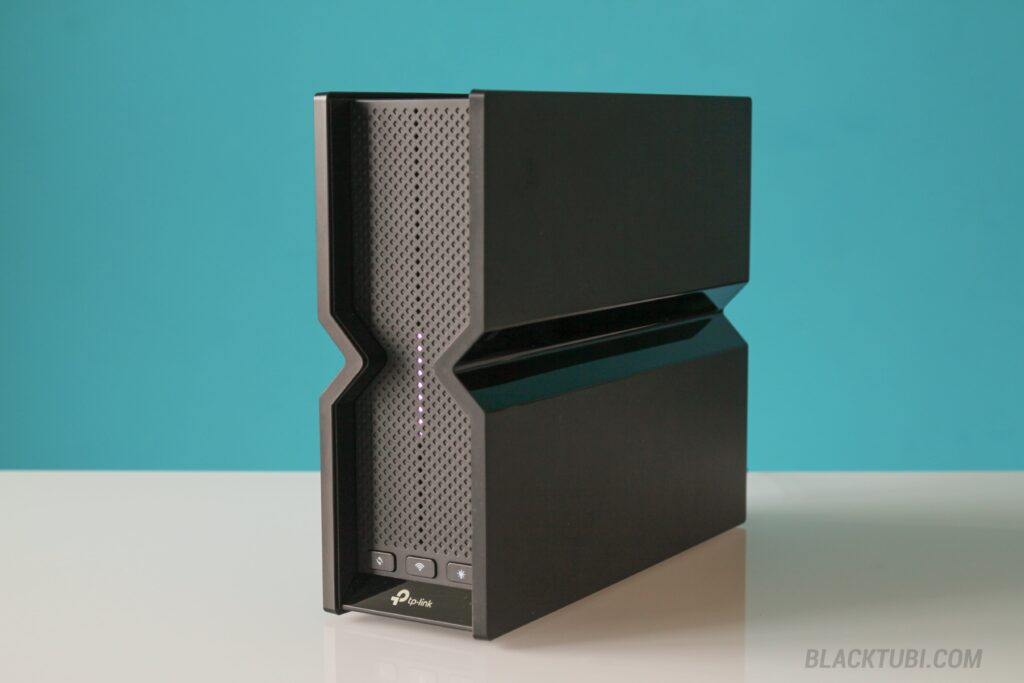
For those in the market for a Wi-Fi 7 router, the options are notably limited, particularly when it comes to finding an affordable solution. The new Archer BE550, TP-Link’s first mid-range Wi-Fi 7 product, presents itself as a cost-effective choice with a price tag of just RM899.
The Archer BE550 offers the full Wi-Fi 7 solution up to BE9300 without compromise with all three bands and Multi-Link Operation (MLO) feature right out of the box. When paired with a good Wi-Fi 7 device, it can support the true Multi-Gigabit Wi-Fi performance up to 2Gbps speed realiably.
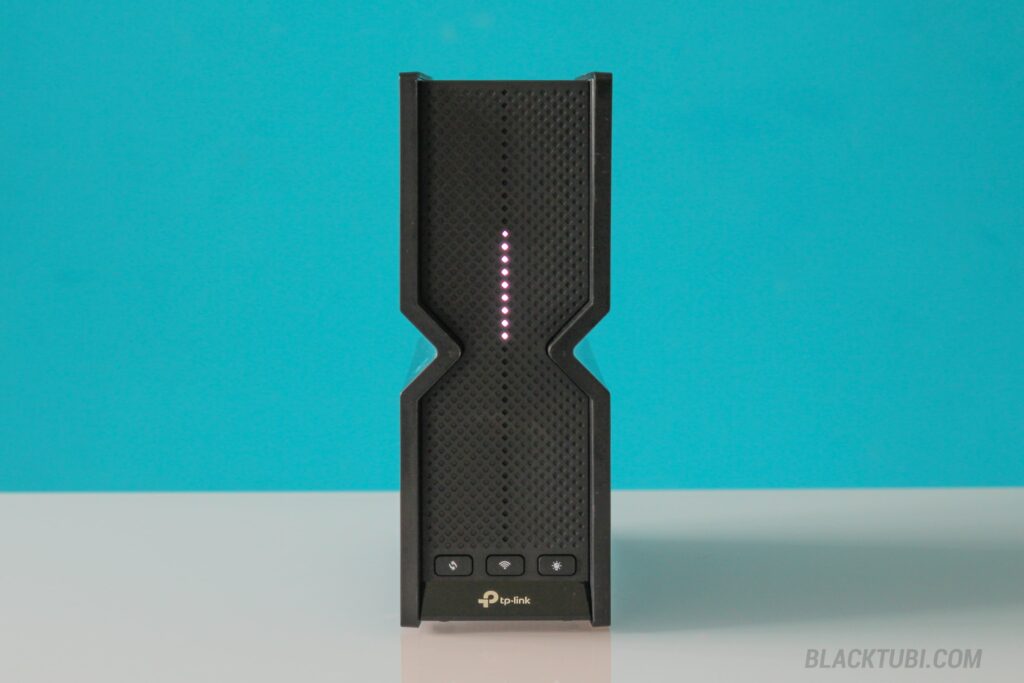
In contrast to some of the more budget-friendly Wi-Fi 7 routers coming soon on the market, the Archer BE550 supports the new 6GHz band. This ensures the router can deliver the multi-gigabit performance Wi-Fi 7 is known for by leveraging on the vast 320MHz bandwidth that’s only capable on the 6GHz band.
If you’re upgrading from an older router especially if it’s a free router from your service provider, you’ll instantly notice the stronger Wi-Fi signal even on older Wi-Fi 6 devices. That’s because a new router often come with the latest technology in wireless signal processing and that will benefit all devices.
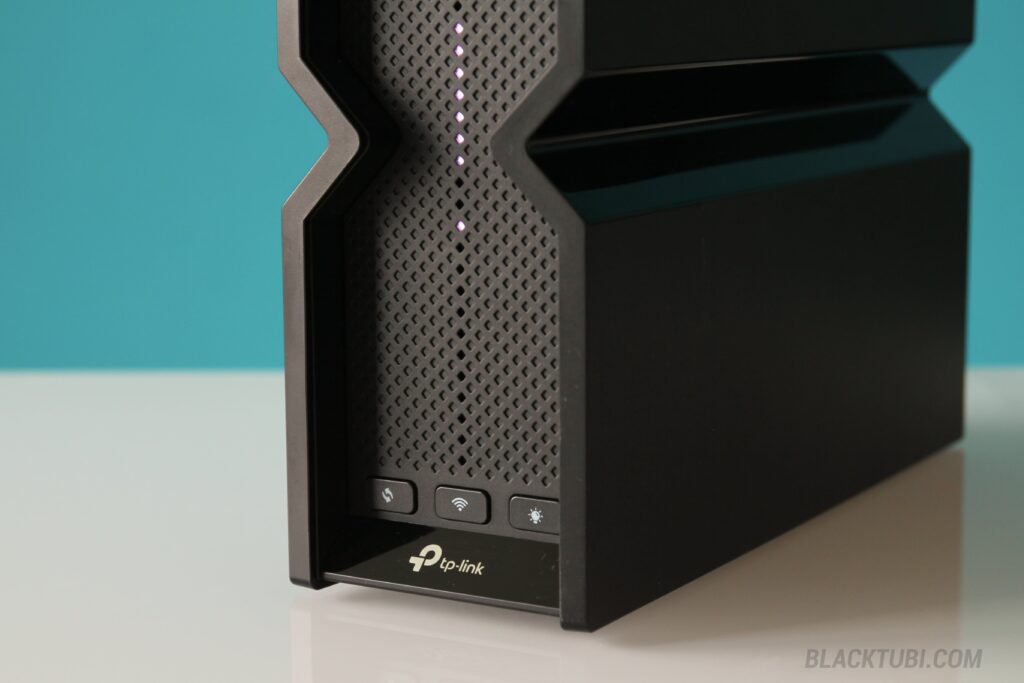
Design-wise, the Archer BE550 resembles a smaller version of the Archer BE800, mirroring the aesthetic of a gaming console with no visible external antennas. This less intrusive design, featuring antennas integrated seamlessly into the chassis, simplifies cleaning and enhances the product’s visual appeal.
Hardware and Specs
| 2.4GHz Wi-Fi | 2×2 AX 574Mbps up to 40MHz |
| 5GHz Wi-Fi | 2×2 BE 2880Mbps up to 160MHz |
| 6GHz Wi-Fi | 2×2 BE 5760Mbps up to 320MHz |
| Chipset | Qualcomm Network Pro 620 Quad-Core 2.2GHz |
| Ports | 1x 2.5G WAN + 4x 2.5G LAN |
Powering the Archer BE550 is a the Qualcomm Network Pro 620 platform with a Quad-Core 2.2GHz ARM-A73 based SoC and 512MB RAM. It’s a next-generation chip offer performance more than quadrupling older models like the Archer AX73. Those upgrading from an older router will definitely feel the more responsive performance especially on busier networks when more features are enabled.
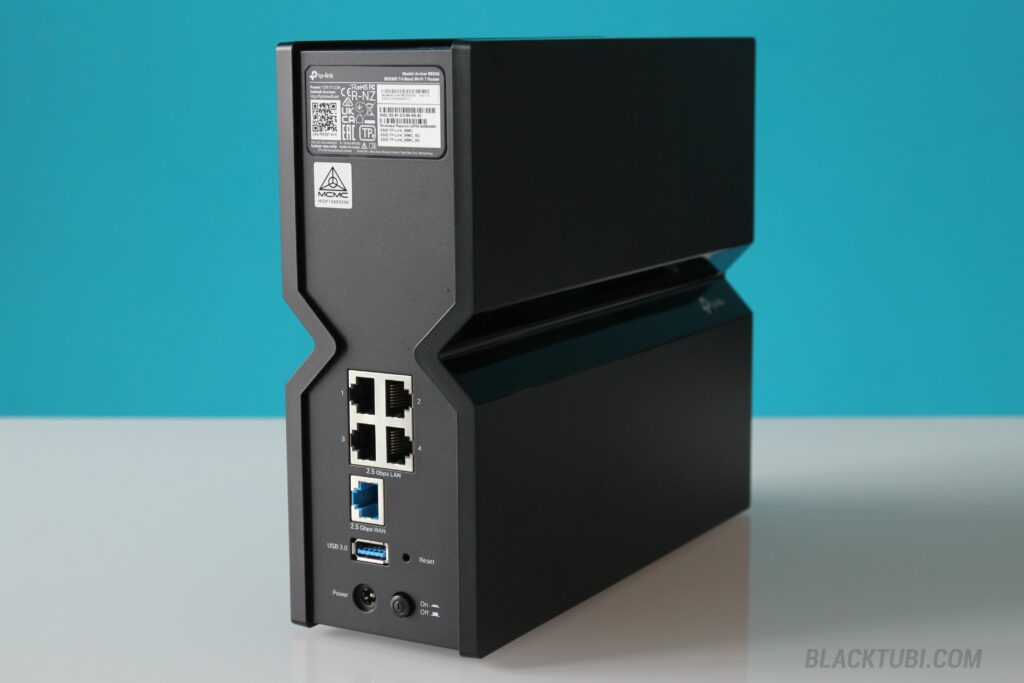
The inclusion of four 2.5G Ethernet LAN ports on the Archer BE550 is particularly impressive as they are much faster than Gigabit ports. The 2.5G ports not only deliver faster data transfer rates but they are also backwards compatible with older Gigabit Ethernet devices. With that, the Archer BE550 positions itself as a future-proof router for those planning to upgrade to a 2Gbps Internet connection.
Archer BE550 6GHz Wi-Fi 7 Test
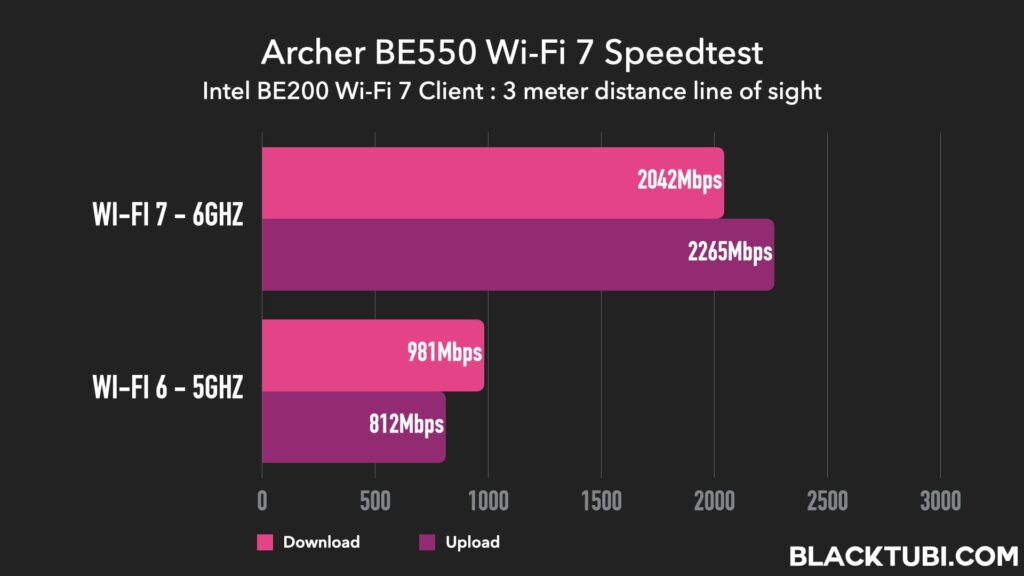
At a short distance of no more than 5 meters, I was able to nearly reach the maximum link speed of the 2.5G Ethernet WAN uplink, indicating that the Archer BE550 is fully equipped to handle 2Gbps speeds. The performance on the Wi-Fi 7 network is effectively doubled compared to the 5GHz network, showcasing the router’s superior capabilities with the latest Wi-Fi standards.
Archer BE550 5GHz Wi-Fi Test
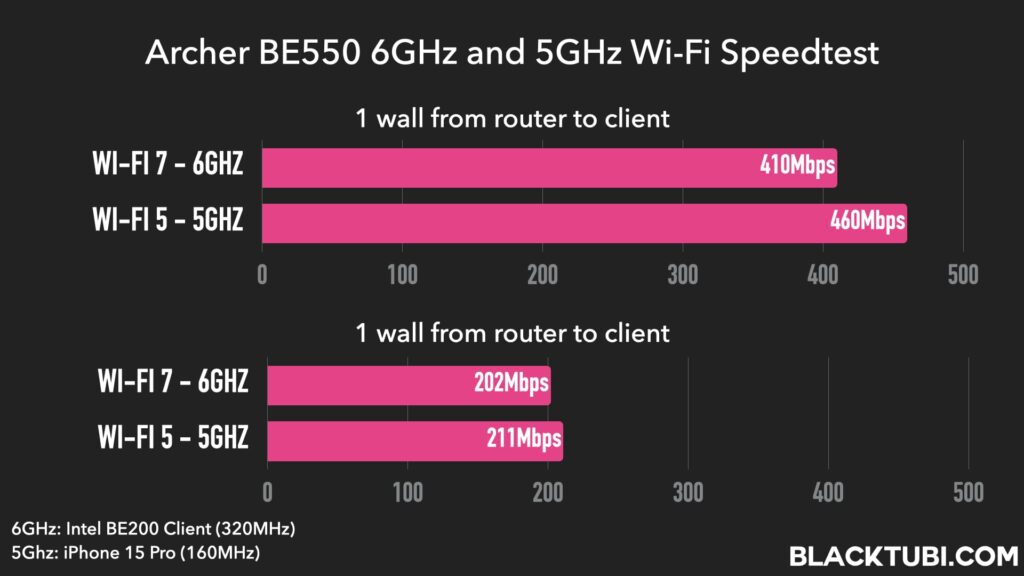
Interestingly, the performance of the 5GHz network on the Archer BE550 is found to be slower compared to some of the TP-Link Wi-Fi 6 routers previously tested. This discrepancy can likely be attributed to the Archer BE550’s 5GHz network configuration being 2T2R (two transmit, two receive), as opposed to the more advanced 4T4R (four transmit, four receive) setup commonly found in high-performance Wi-Fi 6 routers. This difference in antenna configuration can impact the overall speed and efficiency of the network.
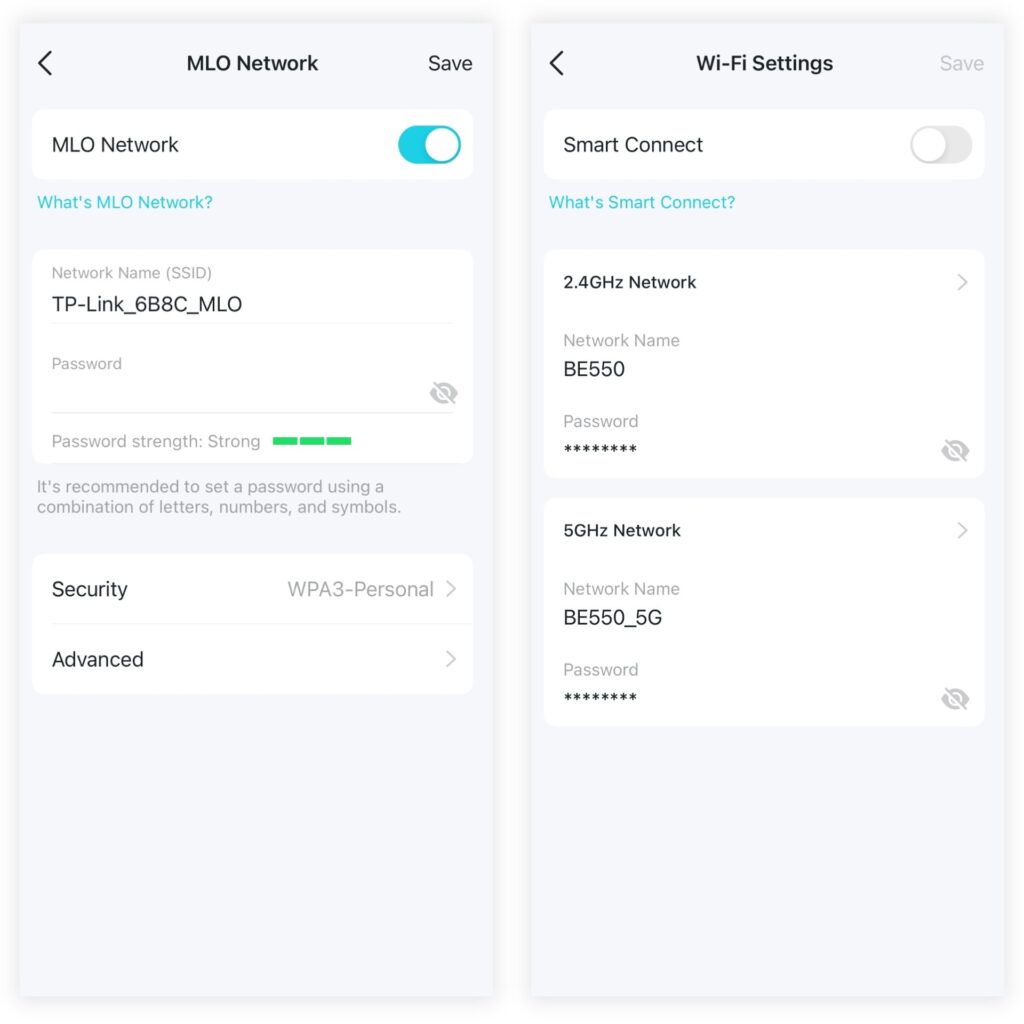
It’s important to highlight that in both scenarios, the 5GHz network is faster than the 6GHz network after a physical wall. Although the 6GHz frequency can offer a much higher capacity, the signal penetration capabilities are notably limited. As a result, once there is a physical barrier like a wall, the 5GHz network typically outperforms the 6GHz network in most cases.
Archer BE550 VPN Performance Test
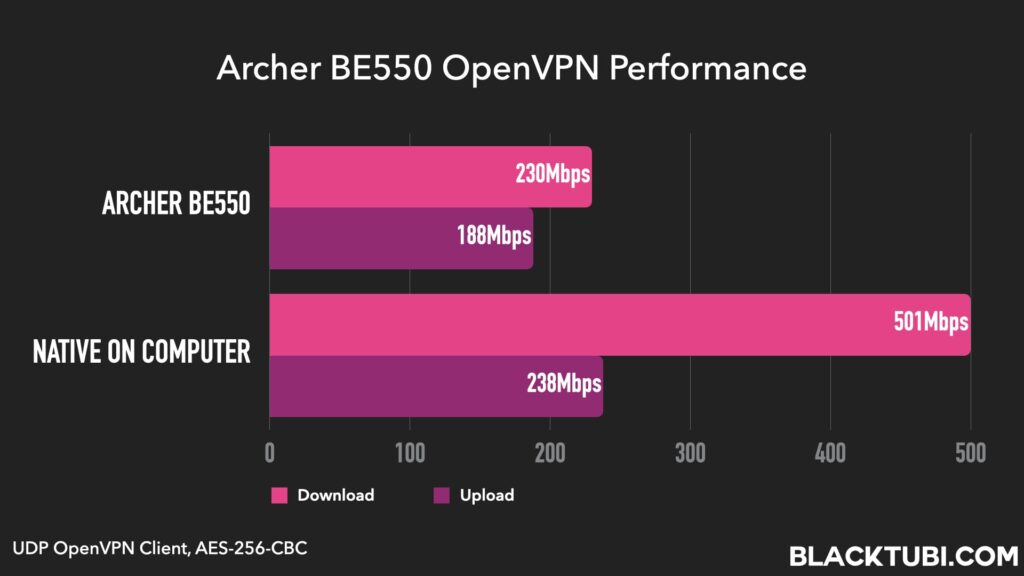
In my testing of the Archer BE550 with an OpenVPN client configured directly on the router, as opposed to running the VPN client natively on my PC, it did not achieve the maximum speed of the OpenVPN server. However, it still delivered a very respectable speed of 230Mbps considering that many other home consumer routers are generally not optimized for running VPN clients directly on the router hardware.
Firmware and Features
The firmware of the Archer BE550 comes with the standard web interface and the Tether app. I find the app more convenient for controlling most of the router’s features. Additionally, the app is linked to a TP-Link ID, enabling seamless operation even when I am not connected to the home Wi-Fi network outside.
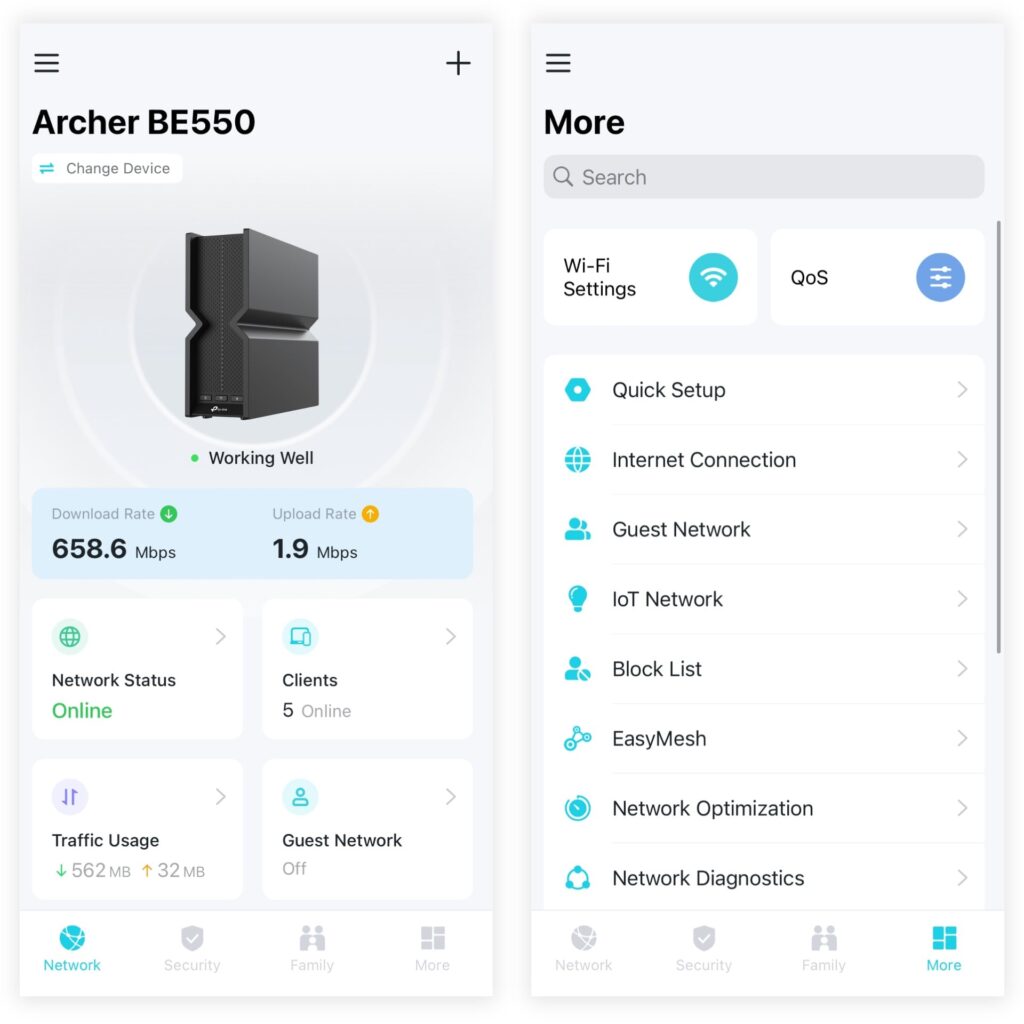
TP-Link added significantly more features on their wireless routers with the launch of Wi-Fi 7. In additio to the typical set of features, the Archer BE550 can now support hosting a VPN server or running a VPN client on the router. It even supported the well-known Wireguard protocol with great performance.
Security is also another key factor on a wireless router that’s acting as the gateway for all your Internet devices at home. The Archer BE550 comes with TP-Link’s HomeShield suite of advanced security features where it can automatically block harmful or malware infected websites.
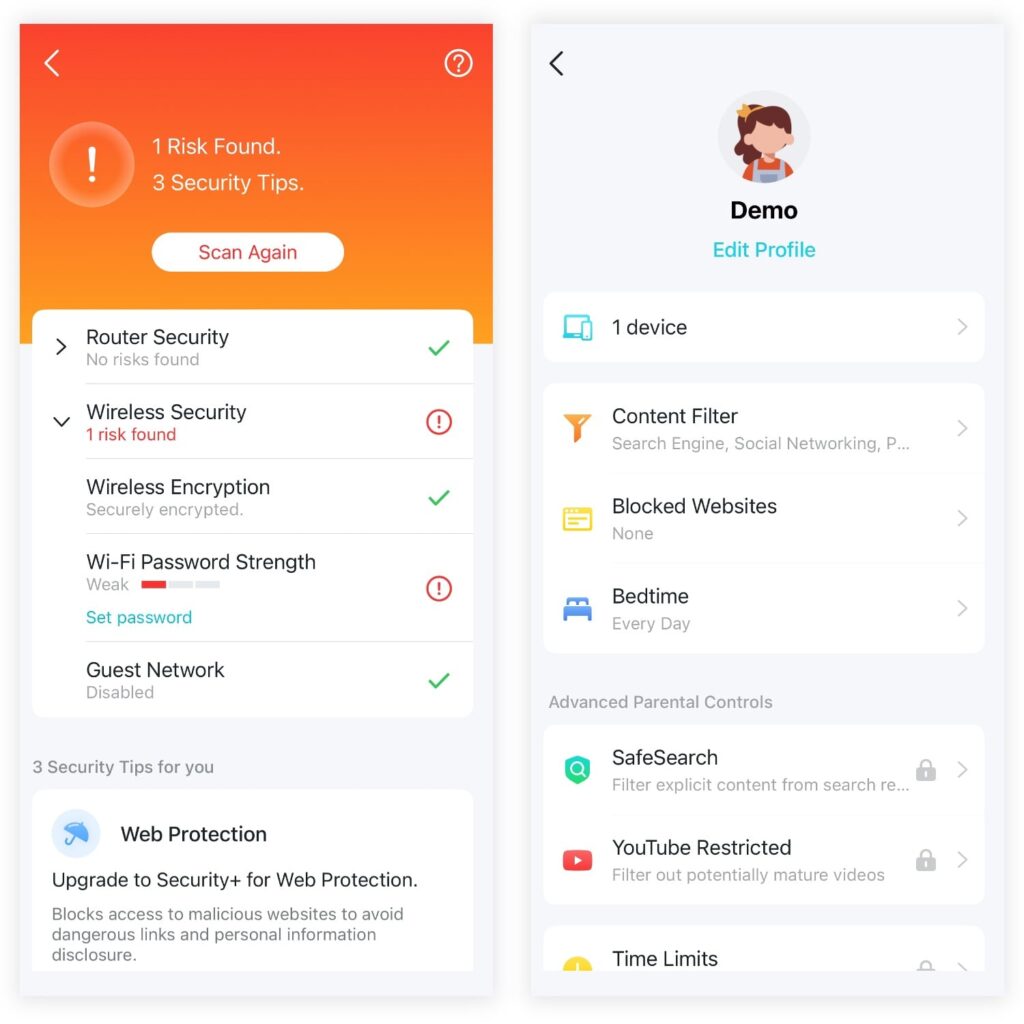
The HomeShield parental control feature can even block websites or apps for selected devices based on their category. This feature will be great for those who which to control Internet usage for kids or younger adults in their family. There’s also a handy usage scheduling feature to control Internet usage time.
Archer BE550 EasyMesh Feature
The Archer BE550 comes with EasyMesh feature for seamless integration with other EasyMesh-compatible routers to enhance Wi-Fi coverage. Additional routers can wirelessly connect to the main router, extending the Wi-Fi coveraing while maintaining a unified network name and supporting smooth roaming capabilities. It comes with Ethernet backhual support for the Mesh coverage as well.
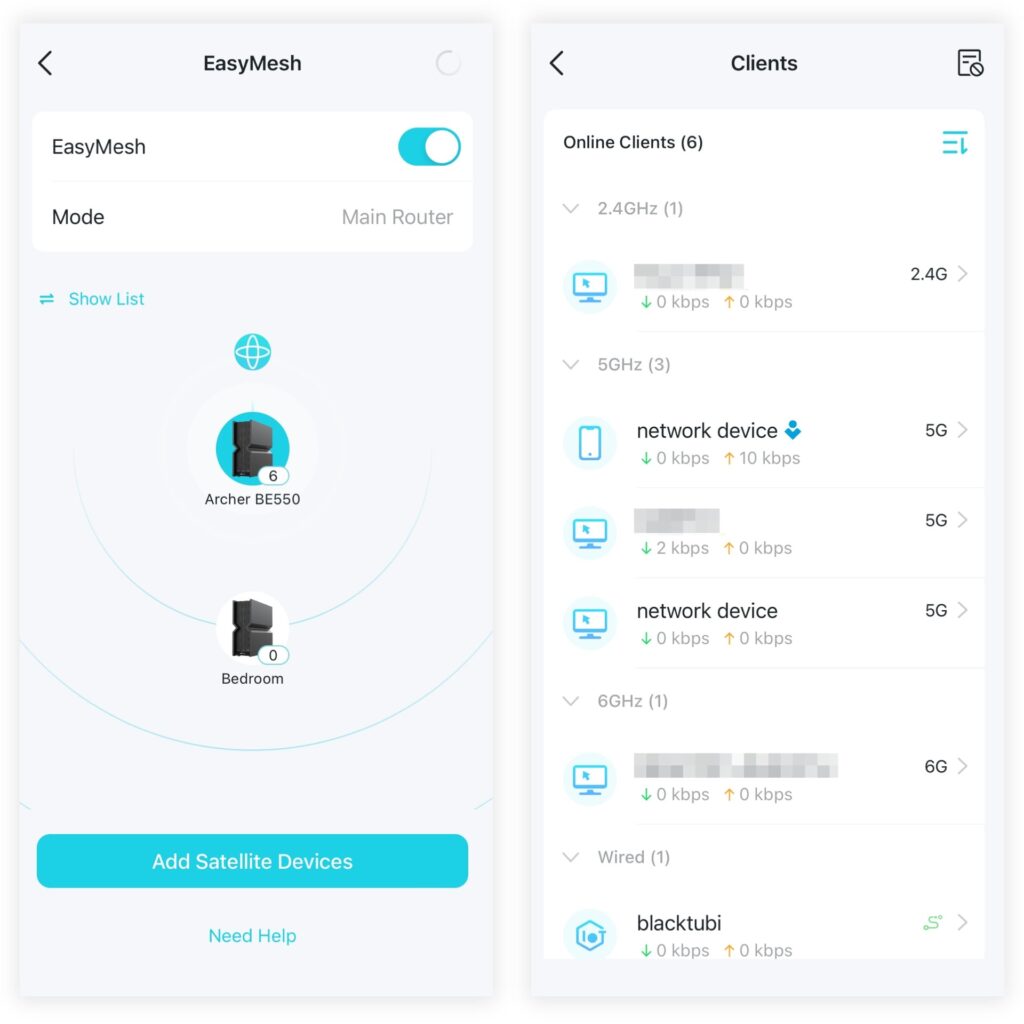
I conducted tests using two Archer BE550 units and found that the feature operates flawlessly. The setup process is straightforward, accessible either through the TP-Link Tether app or the WPS button, offering a hassle-free approach. I appreciate the user-friendly nature of the entire setup process.
Performance in EasyMesh mode is commendable, closely matching that of the Deco BE65, a similar BE9300 system. Nonetheless, the Deco BE65 exhibits its unique advantages, particularly in backhaul management and its capability for seamless, fast roaming. However, for those prefer the robustness of a wireless router, using several units of Archer BE550 on EasyMesh mode is a decent experience.
Closing Thoughts
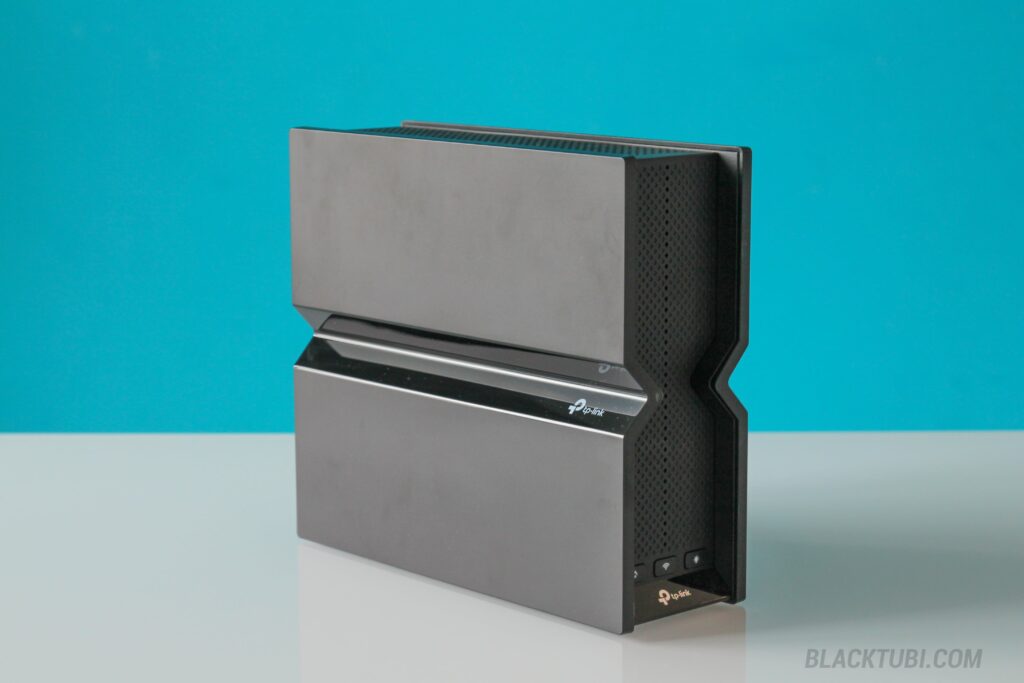
The Archer BE550 is an excellent product from TP-Link. While being the earliest mass producer of Wi-Fi 7 products, the Archer BE550 is a refined and polished product. It offers excellent Wi-Fi 7 performance while providing a flawless and bug-free backwards compatibility with older Wi-Fi devices.
For those in search of an affordable tri-band Wi-Fi 7 router without compromising on features, the Archer BE550 represents one of the best options currently available in the market. Its combination of excellent performance and a robust software makes the Archer BE550 a comprehensive package for users seeking advanced wireless networking capabilities.
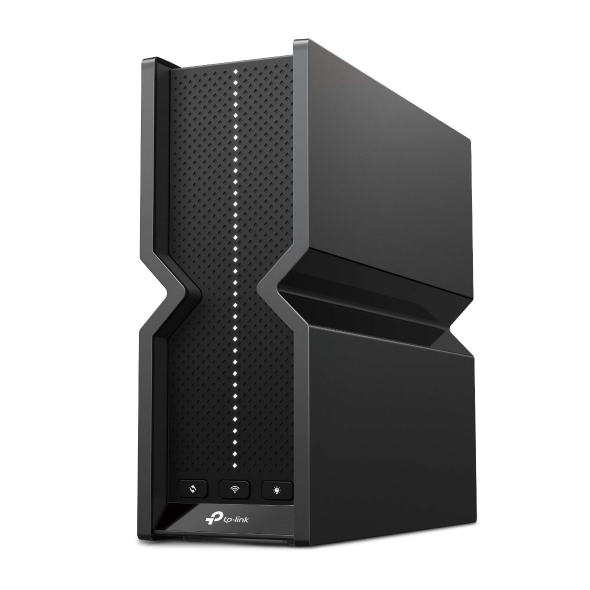
Archer BE550
8.8
Tubi Rating
pros
- All Ethernet ports can support 2.5G Ethernet speed
- Great VPN client performance
- Full Wi-Fi 7 features out of the box
cons
- Does not support wall mounting
- Monthly subscription required to get more features from HomeShield Pro

Easymesh or Deco, is there a big difference in the roaming handover experience? Considering a be805 + be550 combo vs be65
Roaming is way superior on Deco series even if you didn’t enable the fast roaming option. EasyMesh is an inferior one size fits all solution compared to a proper mesh protocol built for it.
Could you please recommend which router to choose between the Archer BE550 and the Mercusys MR47BE? They are quite similar. Alternatively, do you suggest any other tri-band models or something slightly more powerful with a 4×4 antenna configuration?
Thank you very much!
P.S.: Your review is based on version 1 of the BE550, but version 2 is already available, where the 2.4 GHz band has been upgraded from the AX standard to BE.
The Archer BE550 actually performs better than the MR47BE despite not having any visible external antennas.
Can you make a review of Mercusys MR47BE?
Hi will this be a good upgrade from my AX90?
It’s more of a sidegrade, I will suggest a higher end model instead.
How does the ethernet backhaul work? Does it require seperate lan network, like some mesh adaptors do?
Just connect from LAN port of the main unit to the WAN port of the mesh node and it should work automatically.
Was planning to go with the be65 for my new setup but found the be550 for a greatly discounted price how much of a downgrade would this be compared to the 65?
And for a two floor house would I need one on both floors?
I would prefer to have a unit on every floor for a better performance.
i think the biggest issue for the BE550 its really bad connection for cell phones i tried it with 4 phones they all have issues connecting to it and disconnecting alot
Try to update it to the latest firmware, it might help a little.
I think this is a TP Link S/W issue, on my AX 90 i noticed suddenly the last few months this happens too.
ISP: Digi fibre 800mbps
Current setup: main router ax72 (1st floor), second ax72 as AP (ground floor)
Hi sifu,
Im happy with my current setup for my 2-storey home.
If i plan to upgrade my main router to be550, is it really an upgrade?
(I havent had any wifi7 enabled devices yet, just for futureproofing purpose)
Or do u have any other suggestion for my home setup.
Appreciated any feedback
Well, it depends. That’s because the 2.4Ghz and 5Ghz of the Archer BE550 is actually slightly slower than Archer AX72/AX73. However, it comes with the brand new 6Ghz band but with very limited range. So it’s really very tricky. I think the Archer BE400 is a better choice.
Hello, I have an Asus rt-ax82u. Do you think worth upgrading?
There would be an additional 6GHz band but performance on 2.4GHz and 5GHz would be more or less the same when upgrading from a AX5400 router.